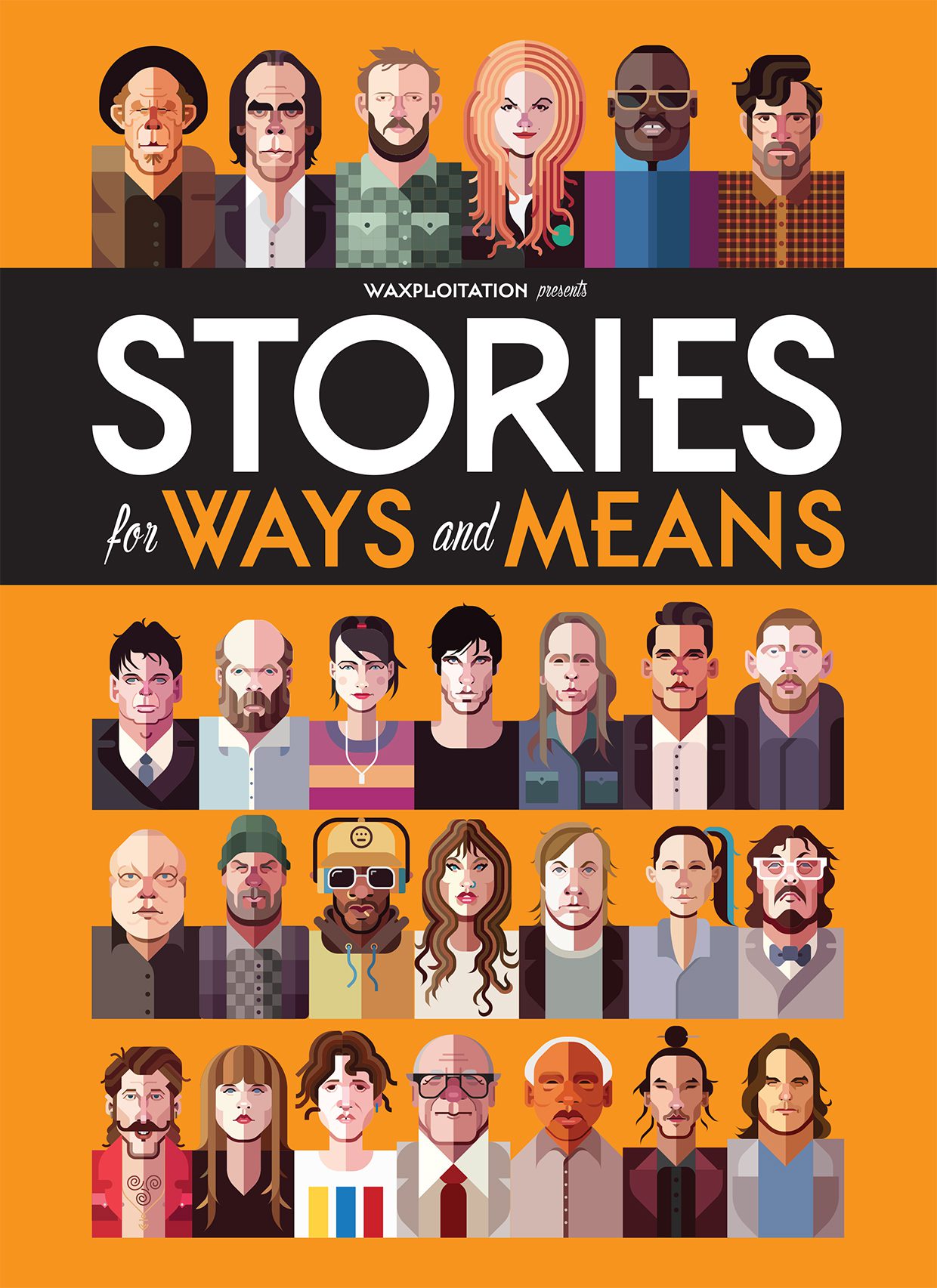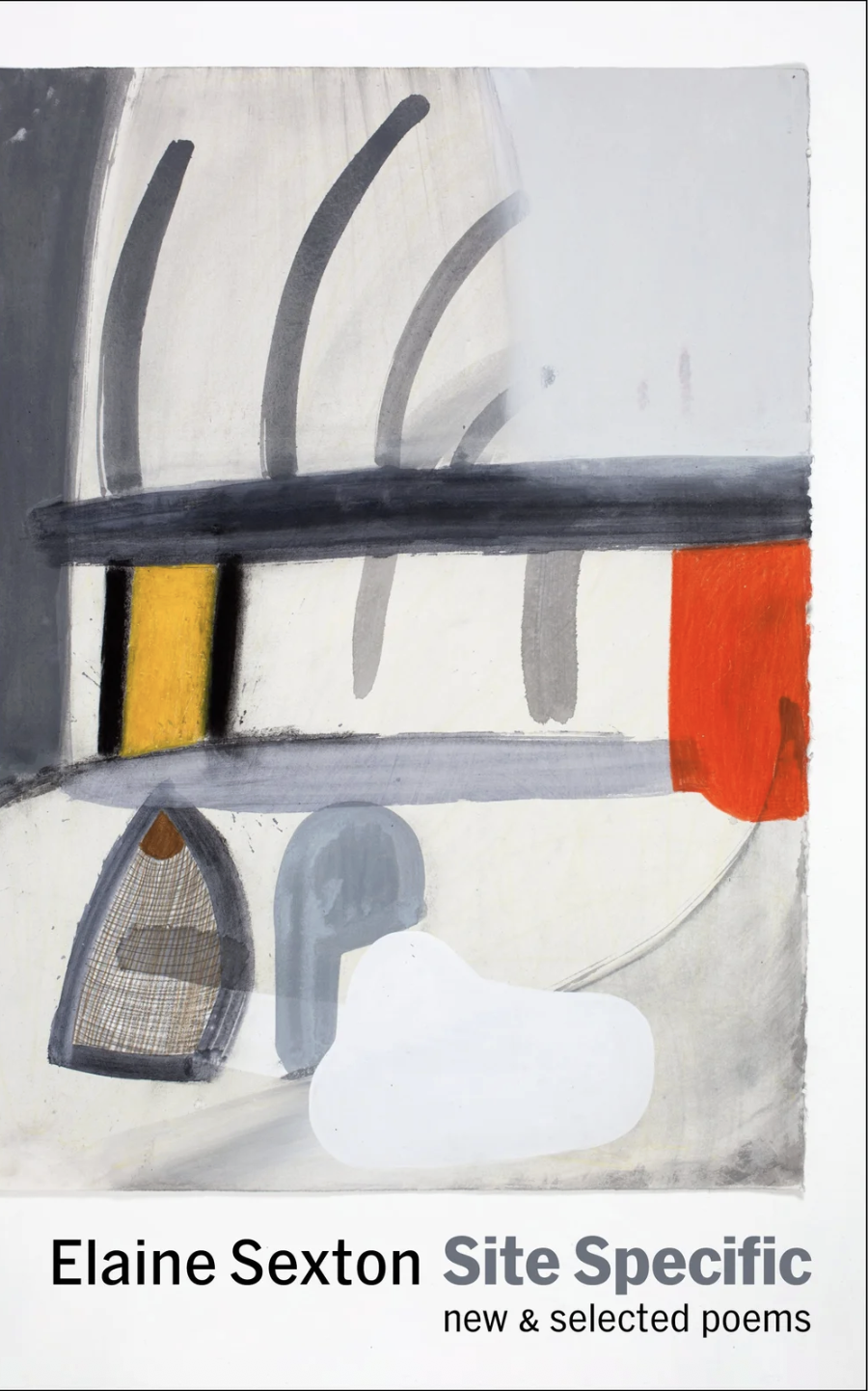In the best collaborations, creative individuals push themselves to work with new media and singular, wild things issue forth. Jeff Antebi of Waxploitation Records has managed to create just this kind of magic in his book, Stories for Ways and Means. A product of ten years’ worth of seeking and story pitching, Stories for Ways and Means gathers work written by twenty-nine songwriters and illustrated by twenty-nine contemporary artists into a kind of incredible “literary mixtape.”
The book features writing from Tom Waits, Nick Cave, Frank Black, Justin Vernon, Laura Marling, Devendra Banhart, Alison Mosshart, and Kathleen Hanna; paintings and illustrations come from the likes of Anthony Lister, Dan Baldwin, Swoon, Will Barras, James Jean, Ronzo, and Kai & Sunny.
Antebi masterminded the book as a way to raise money for children’s literacy programs, and began thematically as a collection of children’s stories although he left artists to define what children’s literature means to them. As a result, some of the material may not be considered “appropriate,” depending on your idea of what children are ready to process—there is mature language, outsider art, and all that you may imagine comes with a free-form take on what artists believe will inspire children.
If you’re of my mind, then you will think that the power of this openness is that it gives kids credit: many times, the thing least available to children, and most inspiring, is the feeling that you are being trusted with material that is not just hermetically clean—that you are being given the creative freedom to experience some of the messiness of the world, through the eyes of someone who may excite your imagination.
Regardless of your view, the book offers readers the joy of experiencing another side of artists whom they have listened to for years, which is an incredibly meaningful experience in and of itself.
Jeff Antebi was kind enough to sit down and offer his thoughts on the process of gathering these stories, and the diverse perspectives that the artists brought to his idea.
***
The Rumpus: Stories for Ways and Means is a project ten years in the making. What gave you the idea to collect children’s stories from musicians?
Jeff Antebi: I think the overriding inspiration was curiosity. Most of my life, I’ve been interested in contemporary painters and contemporary literature as much as I have been interested in music. So the idea of mixing and matching forms and genres has always been rolling around in my head. Children’s stories seemed to be a very easy creative direction for all involved. Totally open to interpretation, but specific enough guidance to not be too intimidating.
Rumpus: How did you begin to collect them?
Antebi: I looked at my music collection and just started cold calling.
Rumpus: Did you have an idea of the scope when you first began, or did it grow and change with time?
Antebi: I always knew the book was going to need to be over 300 pages and hardcover and make a loud thump when dropped on a table. I knew the book was going to have to be a list of names that would get people to just say “wtf?!?!?!”. Do whatever the literary equivalent of a spit take is.
Rumpus: How did you approach the artists—what was the pitch?
Antebi: The approach was a ‘no deadlines’ approach, which is why the book took as long as it did to assemble. I contacted the artists or their representatives, and explained the goal of the project being the benefit for a number of very important NGOs and non-profits working in children’s literacy worldwide. And that there would be no creative limits, and no deadlines. If the artist really wanted to be involved, they could take years to deliver. I would check in once or twice a year. In some cases, that check-in lasted six or seven years.
If they didn’t want to be involved, they had to just tell me once and I’d never ask about it again (though in some cases, I couldn’t resist asking again).
Rumpus: Did you receive any interesting responses when you first asked for the stories?
Antebi: I was surprised how broad the age range of stories were. I think I initially assumed all the stories were going to be actual stories for babies. One of the first stories we got was by Will Oldham, and his story was so scary, I could not get anyone to illustrate it! After a lot tries, we gave the story to Swoon who loved it, but it was one of those where we would talk to painters about the project and they would also be expecting baby stories and when they would get Will’s they were as scared as I was.
And a lot of the authors did stories that were more in the YA genre, which was cool. I was not expecting that, but quite a lot ended up in that age range.
I was also surprised when Gibby Haynes (Butthole Surfers) initially delivered a 6,500-word story.
The beauty of saying ‘children’s story’ is that it’s pretty easy to just say that and leave it to the author’s discretion.
Rumpus: What was the editing process like?
Antebi: Very, very hands-off. As long as the author was happy with what they delivered, I was happy too.
The editing process was mostly just making sure grammatical errors were intentional. And also going back and begging all of the painters to illustrate more images for the stories. Much like the authors, I didn’t pressure the painters. Until we started to design the different story layouts and I realized we needed a lot more images to be able to visually tell the stories.
Rumpus: Who surprised you the most with their story?
Antebi: When I first got Will Oldham’s story is when I first realized this was going to be a really insane book. It was like, all bets are off, in terms of who the audience was going to be. I started to get stories in and would kind of shrug and think of old-school parental warning stickers on cassette tapes in the ’80s.
When we started to shop around for book printers, too, we had to exclude certain countries because of the explicit language and nudity in the illustrations.
Rumpus: And, who wrote a story so close in line with their songwriting that they did not surprise you at all?
Antebi: I think I was surprised by every story. That’s what made it so much fun. And I think that’s also what made it fun for the contributors, too. The challenge of doing things differently than people would expect.
Rumpus: Is there something that the songwriters, as a group, brought to the storytelling? A certain kind of imaginativeness or freedom? A lyrical quality?
Antebi: Something consistent was the individual authors’ excited reaction to seeing what the painters and illustrators delivered. That was easily the most fun. Getting their reactions. The collaborative part, having someone the author liked and trusted to do something unexpected. In every case, the reaction was universally a kind of “wow.”
Q: How did you pair the artists and songwriters? They are incredibly well-matched!
Antebi: Thanks. A lot of it came down to triangulation of my personal wish list, the painter’s availability, and then whether or not the author liked the painter and vice versa. The good news was that there are so many talented artists all over the world, eventually we could always find a match.
When you are okay with something taking years to finish, it takes a lot of pressure off. It allows for lots of time to keep discovering on the fly.
***
Sales of Stories for Ways and Means will raise money for Room to Read, Pencils of Promise, 826 National, and other organizations devoted to children’s literacy. You can read more about the organization and order a copy here.





